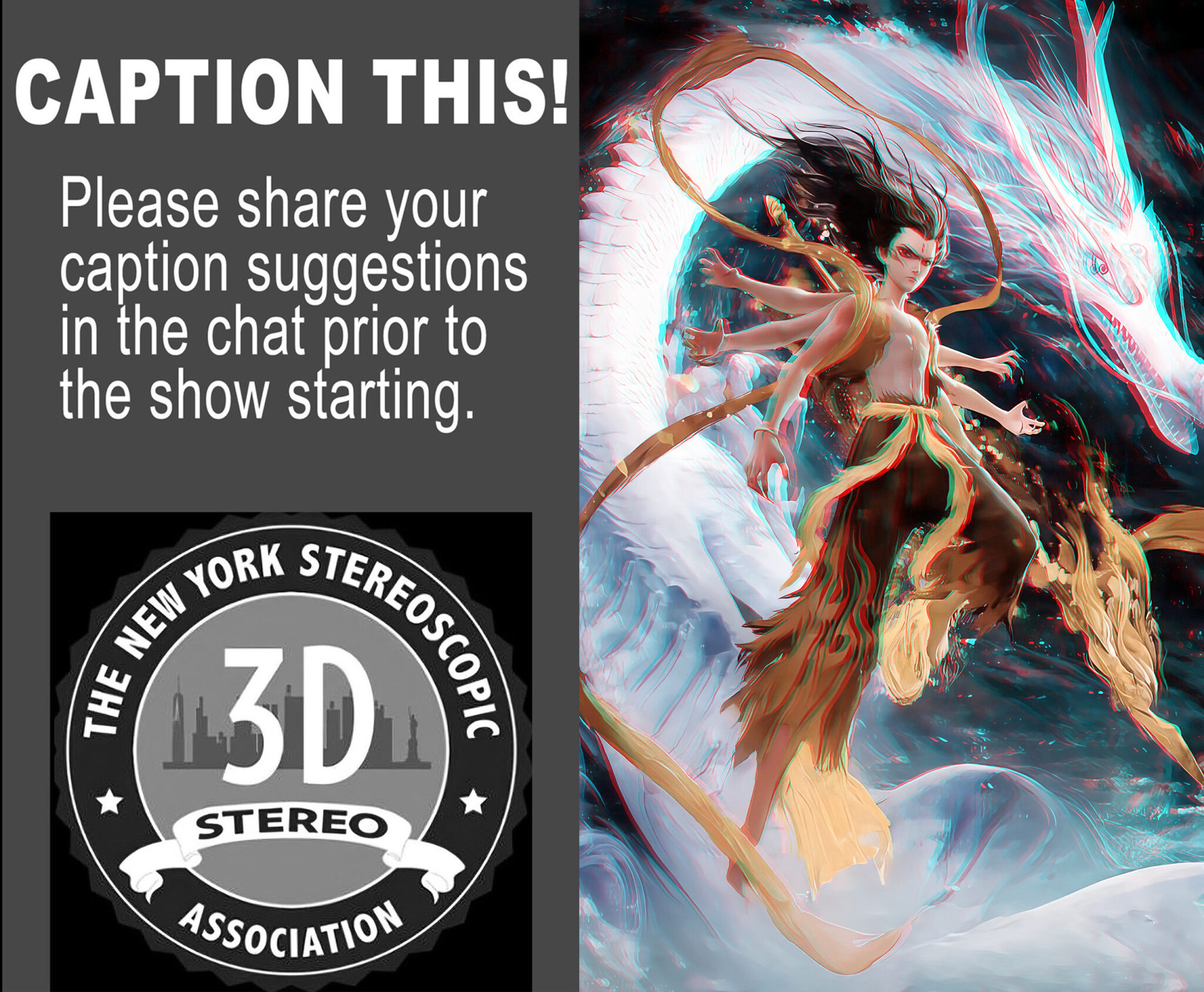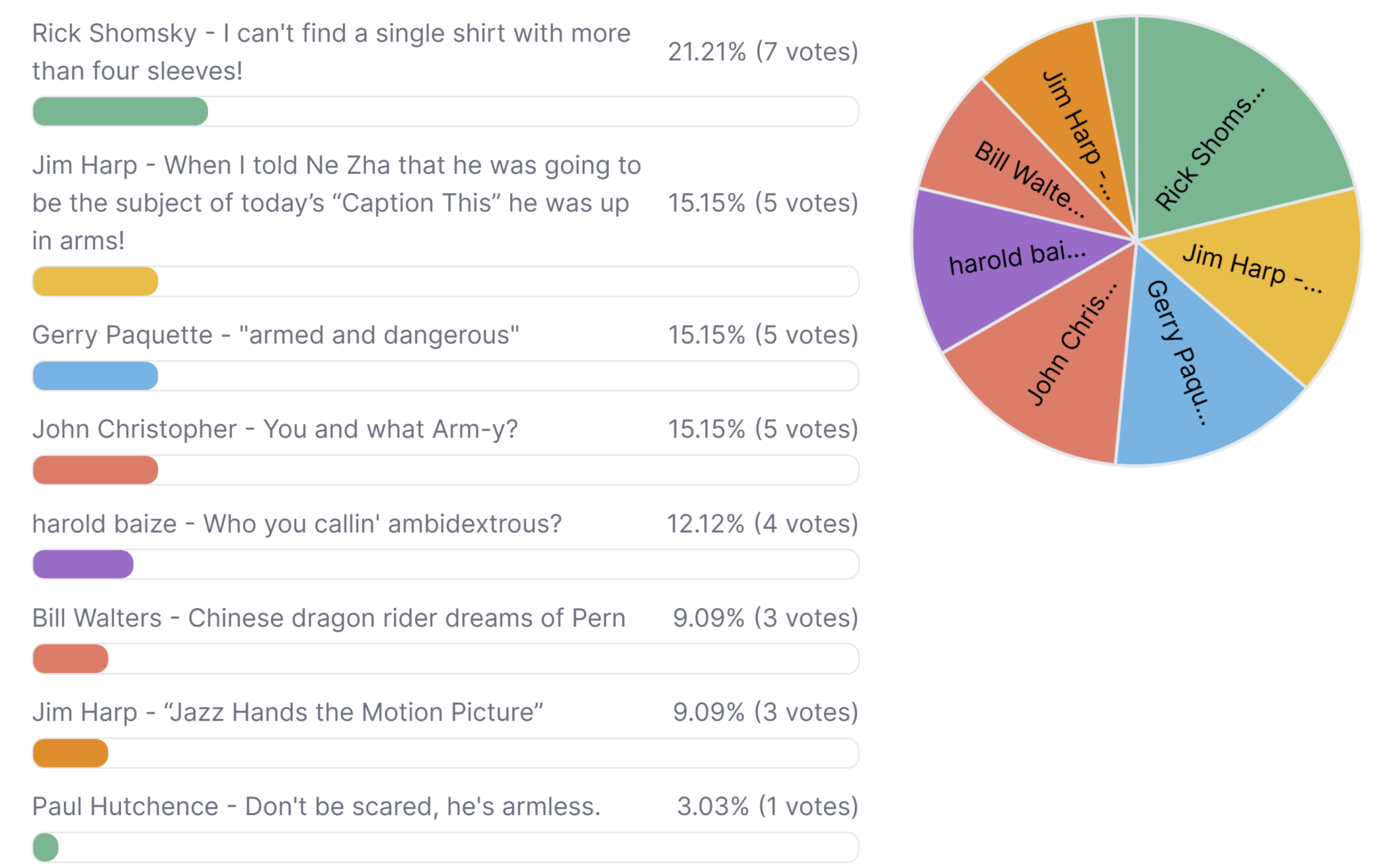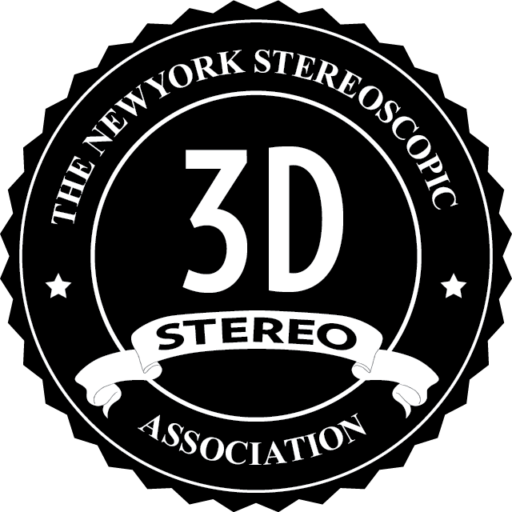Jason Altice shows his improved viewmaster scanner and uses AI to bring the reels to life.
https://www.youtube.com/@CodeMakesItGo
https://www.youtube.com/@Reel3DVideos
How to build the scanner https://www.instructables.com/Scan-View-Master-Reels-to-Digital-Video-Its-the-Vi/
Tools used
Open AI API (To get the fun facts for a reel): https://platform.openai.com/docs/api-reference/introduction
Eleven Labs (Generate AI text to voice): https://elevenlabs.io/
HitPaw (AI upscaling): https://www.hitpaw.net/
Immersity (Volumetric video): https://www.immersity.ai/
DimensionX (AI Rotate static image): https://huggingface.co/spaces/fffiloni/DimensionX
Hailuo (AI animation of image): https://hailuoai.video/
DeOldify (recolor images): https://deoldify.ai/
DaVinci Resolve (Video Editor): https://www.blackmagicdesign.com/products/davinciresolve
Johnny Laser hosted an enthralling Zoom show that united 3D enthusiasts to explore the past, present, and future of stereoscopic technology, featuring guest Jason Altis and his pioneering AI-enhanced View-Master projects. The episode paid homage to French photography trailblazer Louis Ducos du Hauron, traced key milestones in 3D history, and showcased Altis’s cutting-edge techniques for reviving vintage reels with artificial intelligence.
Details below, click + to expand.
The show opened with a heartfelt tribute to Louis Ducos du Hauron, a French visionary whose innovations shaped modern photography. Johnny Laser and co-presenter Joe spotlighted du Hauron’s 1891 invention of the anaglyph—a method that superimposes red and cyan images to create a 3D effect when viewed through colored glasses—pioneering stereoscopic visuals still beloved today. They also celebrated his groundbreaking 1877 work in color photography, noting how he used three filters (green, orange, and purple) to capture the first in-field color photo of the Cathedral of Agen, France. Joe emphasized du Hauron’s famous insight, “Three notes are enough to orchestrate color,” which inspired the RGB color model powering today’s digital displays. A lesser-known tidbit shared was du Hauron’s 1893 treatise, The Art of the Anaglyphs, and his generous offer to relinquish his patent rights if someone could produce an anaglyph of the Moon—a challenge met 30 years later in 1923 by Leon Gimpel using astronomer Charles Moran’s lunar photos. Accompanied by the 1927 jazz tune “If All Women Knew” by Fred Melee and Lezz D. Monar Ru, this segment was a delightful blend of history and reverence for a foundational figure.
The historical exploration continued as Joe and Johnny reflected on pivotal moments in 3D entertainment, sparking lively banter. Joe cited Robert Ferman’s account of the first 3D movie screening in June 1915 at New York’s Astor Theater in Times Square, though he briefly confused it with a 1922 event from Ray Zone’s book involving a unique viewer setup with poles and tables. Johnny corrected the timeline and shared a personal anecdote about organizing the 100th anniversary celebration in 2015 at the Marquee Hotel, built on the Astor’s former site. The event, held in the Astor Room, drew a crowd of 3D enthusiasts—including notable figures like Murray Lerner—despite initial skepticism from hotel staff unaware of its historical significance. Paul Hutchins then took viewers on a virtual tour of the Theater Royal in Bath, England, a Georgian masterpiece built in 1805. He detailed its dramatic history—a devastating Victorian-era fire, a 20-year restoration two decades ago, and its current status as a thriving 900-seat venue—enhanced by 3D visuals and Victorian music hall song “Follow the Van,” which added a toe-tapping charm. This segment bridged past and present, showcasing 3D’s power to preserve and animate historical narratives.
The spotlight then turned to Jason Altis, a returning guest whose passion for View-Master reels and technical ingenuity stole the show. Building on his September 23, 2023 appearance (Season 8, Episode 3), Altis recapped his View-Master scanner—nicknamed the “View-Remaster”—which started as a hobby to automate reel scanning and has since evolved into a sophisticated tool. He detailed upgrades like a macro lens for sharper images, halo lights for consistent illumination, and a custom-built CNC machine with a fourth axis for precise reel rotation, guided by computer vision to within 0.1 millimeters of accuracy. Altis also showcased a clever organizational system: drawers with LEDs that light up to locate or store his collection of over 2,000 reels. His YouTube channels, “Real 3D” and “Code Makes It Go,” host over 300 videos in formats like cross-view, parallel-view, Oculus, and anaglyph, making these nostalgic treasures accessible and engaging. The audience learned how feedback from his growing community fuels his drive to refine the system, turning a childhood favorite into a modern marvel.
Altis’s presentation took a futuristic turn as he demonstrated how AI transforms static View-Master slides into dynamic experiences. He integrated ChatGPT into his scanning software to auto-generate fun facts for video descriptions—like three tidbits about Robin Hood—via its API, adding an educational twist. Using Eleven Labs, he creates human-like narration tailored to each reel’s theme, even cloning voices (e.g., Bruce Lee) for an authentic touch, with plans to demo audio in the afterparty. AI upscaling enhances 50-year-old film clarity, predicting details like facial features based on deep learning, while video diffusion and neural motion animate scenes—think a fountain with rippling water or a flag waving in the breeze. Altis shared a prompt-driven example where he added ducks to a river scene, complete with ripples, and another where he controlled actors’ emotions, toggling between panic and calm in a collision scenario.
However, the tech isn’t flawless. Altis entertained viewers with “bloopers”: cars sliding chaotically in traffic, an extra girl appearing in a flask-drinking scene, or a lion chase turning one character into a mouse. He explained that AI struggles with abstract or fantastical content (like Alice in Wonderland) due to limited training data, requiring precise prompts to avoid costly misfires (each animation costs about 25 cents in credits). He’s also tackling color-shifted reels—where cyan fades to red—using Oldify and training a model with faded and unfaded pairs, showing promising early results with a Superman reel. This segment was a rollercoaster of awe and amusement, highlighting AI’s potential and pitfalls.
The afterparty buzzed with audience interaction, revealing Altis’s workflow and sparking ideas. Responding to Bill Walters, he clarified using only the left slide for animations, cleaning reels with soft brushes, air blowers, and AKVIS Retoucher software to remove dust and scratches before AI upscaling. He expressed a hunt for rare reels—like faded English ones paired with unfaded Spanish or German versions—to train his color-correction model, noting Kodachrome’s superior longevity. Peter Sinclair asked about real-time 3D adjustments via voice commands; Altis noted current tools require 4-5 minute regenerations, though he’s optimistic about future advancements. When asked about volumetric data, he confirmed AI deduces it from 2D images, not stereo pairs, and explored exporting to Blender or Unity for VR—prompted by chat mentions of MeshAI and Sora—though it’s not yet seamless.
Altis relies on cloud servers for processing, bypassing the need for a high-powered local machine, unlike his earlier volumetric imaging days. He uses DaVinci Resolve’s Studio version for editing, though the free version handles his green-screen needs; he bought it to support the developers and explore color effects. On inspiration, he cited asking ChatGPT for updates on AI tools, bypassing human forums for faster, link-rich answers. His next project? Scanning True-View stereo cards for colorization and animation, potentially tapping Sheldon Aronowitz’s rare color originals via Walter Zigg. This Q&A was a treasure trove of insights, cementing Altis as a generous, forward-thinking creator.
Johnny Laser closed with effusive gratitude to Altis—“a wizard” sparking “a thousand creative ideas”—the crew, and the audience, urging them to subscribe to Altis’s channels. He teased a future appearance by Blackmagic Design reps, possibly with an Apple guest, at the National Association of Broadcasters event in Las Vegas, promising more tech talk. Reflecting on AI’s mind-blowing growth—like animating his grandfather or soothing his kids with ChatGPT bedtime stories—Johnny marveled at its magic, echoing Altis’s sentiment that it’s a tool enhancing creativity. The show ended with a call to “share your joy” and a nod to the next episode, leaving viewers nostalgic, educated, and buzzing about 3D’s limitless horizon.
View-Master: Iconic stereoscopic toy central to Altis’s work. Website
ChatGPT (Open AI): AI for fun facts, coding, and research queries. Website
Eleven Labs: Voice generation for narration, including cloning. Website
DaVinci Resolve (Blackmagic Design): Video editing software, free and Studio versions. Website
AKVIS Retoucher: Tool for removing dust and scratches from scans. Website
Blender: Open-source 3D modeling software for potential VR exports. Website
Unity: Game engine for creating immersive 3D experiences. Website
Merity: Referenced for 2D-to-3D conversion (possibly “MeshAI” or a typo; no official site found).
MeshAI: Chat-mentioned AI text-to-mesh tool (conceptual; no specific site).
Sora (Open AI): Emerging AI video creation tool, still in development. Website
Oldify: Free colorization program for faded images (no official site; likely niche or generic).
Blackmagic Design: Camera and software company teased for future appearance. Website
Kodachrome (Kodak): Durable film type praised for color retention. Website
Dimension X: Video diffusion tool for volumetric scenes (research project; no commercial site; see paper reference).
Preceding summary was generated by Grok AI, and vetted by organic wetware



